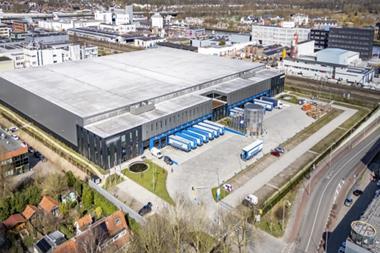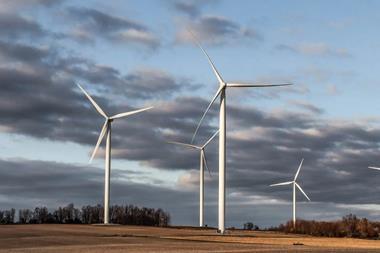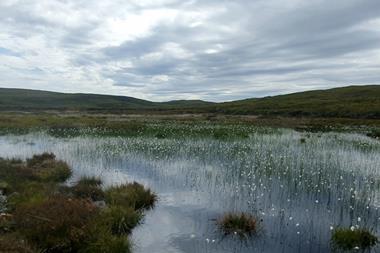In a new report*, Richard Bowman and John Wills explain that ‘green value' is starting to have an impact on property valuations, but further education will be central to future prospects
In only a few short years, Green Star buildings have captured serious attention, now accounting for as much as 30% of the new building market.
Such rapid shifts in market sentiment are difficult for professional valuers to incorporate into traditional models, which rely on tangible evidence from sales and/or leasing from multiple properties. That evidence is coming, but with many Green Star buildings still under construction, the database remains limited. In the meantime, valuers will need to use their expertise to assess the extent of the advantage Green Star buildings will enjoy.
Ignoring the likely impact of this advantage is not an option: we have found Green Star buildings are already having a market impact. At the very least, non-Green Star buildings face accelerated value depreciation. To be able to make informed judgements with limited information, valuers will need to share knowledge in order to keep pace with the marketplace.
By surveying and interviewing industry leaders, we aim through our report to share and pave the way for further exchange and learning. Our report is based on an extensive literature search, case studies of eight recently completed Green Star buildings and interviews with some 50 Australian property owners, valuers and developers, responsible for some 30% of total property fund assets within Australia, with a combined value of A$85bn (€51bn).
The majority of investors indicated that they would pay more for a Green Star building. The improved marketability of Green Star buildings is their main current competitive advantage: they are easier to sell and lease, which reduces vacancy times and hence income losses.
While some tenants are willing to pay the rental cost of achieving Green Star, a rental premium is not yet proven in all cases. Corporate and government demand for improved lifecycle economic and environmental performance are key drivers of green, but these tenants can negotiate green as a bonus for long rentals with predetermined review patterns, rather than paying an up front direct premium.
In the longer term, however, the industry expectation is that rental growth, tenant retention and operating cost savings will become the key drivers for the market value of Green Star buildings, relative to non-Green Star buildings. Green Star buildings also claim improvements in productivity, wellbeing, and occupational health and safety, but market acceptance of these intangible values is limited.
It is highly likely that a two-tiered market will emerge, with Green Star buildings attracting premiums and/or existing assets being discounted. Non-Green Star buildings may suffer from lower rental rates, rental growth and higher long-term risk with greater potential capital expenditure requirements resulting in decreasing value.
Many investors and owners/managers believe Green Star buildings are ‘future proofed' against the risk of rising energy costs, market rejection of non-Green Star buildings and tightening regulations on building sustainability performance. Non-Green Star buildings may face the prospect of major capital works to meet future performance standards, which currently appears omitted from contemporary valuation consideration.
Subject to the availability of adequate comparable rental and sales evidence, each of the conventional market-based methods of valuation could be adopted for green buildings. However, the discounted cash flow (DCF) valuation methodology allows the valuer to more explicitly reflect the various aspects of comparable rental and sales evidence in the valuation process. The DCF method facilitates transparency in the various rental rates, outgoings rates, growth rates and capital expenditure allowances adopted, enabling the valuer to more fully reflect all aspects of the comparable evidence.
Sensitivity modelling, via movement in key valuation factors, shows value is most sensitive to movements in rental growth. Thus, if non-Green Star buildings fail to maintain rental growth in the face of tenant preference for green, owners of such buildings will be confronted with a significant loss of value - modelling shows that a fall from 3.5% rental growth to 2% rental growth would wipe off almost $13m from the value of a $100m property.
The potential upsides for Green Star buildings are in increased renewal probabilities, decreased downtimes and lower terminal yields. Valuers need to make clients aware of the potential impact of Green Star buildings on future values.
Given the state of the market for Green Star buildings and the challenges this poses to the valuation profession, the following recommendations are made:
Property professionals should be encouraged to undertake life-long learning in sustainability issues, such as the Green Building Council of Australia's Green Star Accredited Professional course to improve their understanding of Green Star buildings and their economic and environmental performance; Regulators, policymakers and professional associations should investigate ways to improve awareness of the impact of sustainability features on specific market transactions so that valuers can more quickly detect and assess sustainability market trends; The valuation profession should continue to foster discussions about Green Star buildings within the valuation industry and with key stakeholders from the wider property industry and from government. This should include conferences and academic papers; The valuation profession should also share information globally with other professional bodies, given the growth of green buildings in overseas markets; Asset and fund managers should also investigate means of improving understanding of how sustainability can be incorporated into asset management plans.
Richard Bowman is principal and representative, real estate advisory services, Ernst & Young, Melbourne.
John Wills is director, the Property Lab, Sydney
*The report ‘Valuing Green' is published by the Green Building Council, Australia
What are Green Star buildings?
The Green Building Council of Australia defines a Green Star building as a property that incorporates design, construction and operational practices that significantly reduce or eliminate the negative impact of development on the environment and occupants. Specifically, a Green Star building is any building that achieves a ‘Green Star' rating of four or more stars under the Green Building Council of Australia's holistic Green Star rating system. Under the Green Star - Office Existing building rating tool, which in 2008 was still an ‘extended pilot', projects that do not achieve a 4 Star Green Star benchmark can still achieve a certified rating of between one and three stars.
The Green Star rating separately evaluates the environmental initiatives of projects based on the following environmental impact categories:
For each green feature that a building incorporates, as specified by the rating system, it receives a point in one of the above strategy areas, which are also pre-weighted. Based on the number of points received, the building is then classified as either:












